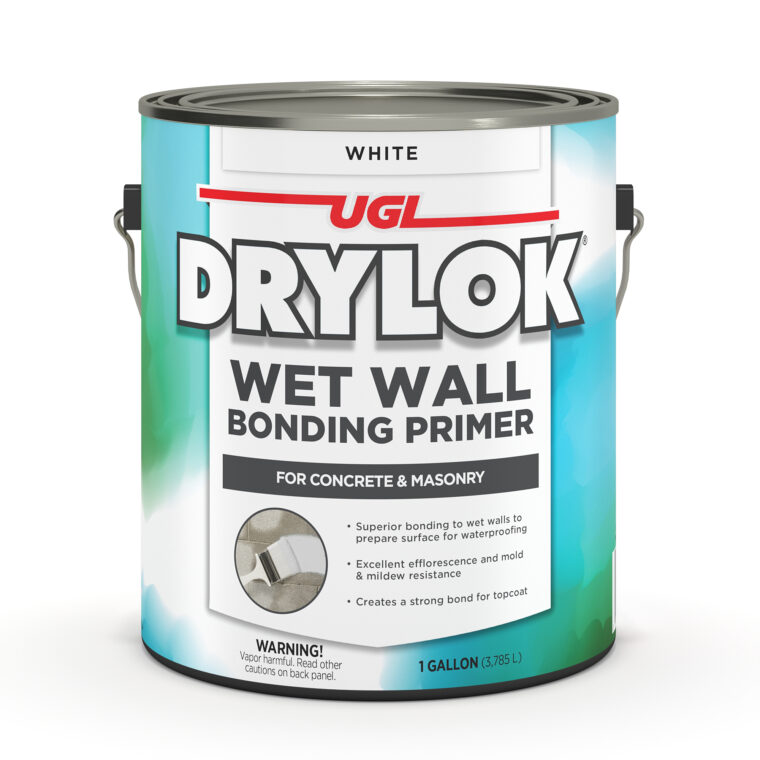
Preparing plaster walls for paint or waterproofing is a job that requires the right materials and techniques. Primers are essential for creating an effective barrier against moisture, salt deposits, mold and mildew on plaster surfaces. DRYLOK® Wet Wall Bonding Primer is a high-performance primer that provides superior protection from these damaging elements while also providing excellent adhesion to plaster walls.
This article will discuss why this product is the best choice for priming plaster walls as well as how to properly prepare them before applying the primer.
What is a Plaster Wall?

Plastering walls, a time-honored building process, can be traced back to ancient civilizations. Plaster is made by combining lime, water and sand, along with other components such as fibers, plaster of Paris and cement. The unique blend results in a versatile and robust material suitable for various applications in construction and decoration.
The process of constructing plaster walls involves applying the wet plaster mixture to a wall or surface in multiple thin layers. Each layer is carefully spread to ensure even coverage and thickness. As the plaster dries, it undergoes a chemical reaction known as carbonation, which causes the mixture to harden into a durable and resilient surface. This hard plaster layer not only provides structural integrity to walls and ceilings but also serves as an excellent base for painting and decorating.
Plaster walls are loved for their aesthetic appeal, as they can be easily shaped and molded to create intricate patterns and designs. Plaster walls have excellent soundproofing and insulation properties, and they can create a comfortable and energy-efficient living space. Plaster walls also have fire-resistant qualities which makes them a safe option for residential and commercial buildings.
Despite the emergence of modern alternatives like drywall, plaster walls continue to be a popular choice among homeowners and builders who value the traditional charm, versatility and long-lasting nature of this age-old building material.
The Importance of Choosing the Right Primer for Plaster Walls

To guarantee a beautiful and durable finish for your plaster walls and ceilings, choosing the highest quality primer is essential.
Protection from Efflorescence
DRYLOK Wet Wall Bonding Primer plays a significant role in preventing efflorescence, a problem that arises when soluble salts migrate to the surface of masonry materials and crystallize.
Efflorescence occurs when three conditions are present: water-soluble salts, moisture and a pathway for the salts to migrate to the surface. By applying DRYLOK Wet Wall Bonding Primer to plaster walls, you seal the pores and pathways through which the salts might travel, further reducing the likelihood of efflorescence development.
Protection from Mold and Mildew
Mold and mildew formation on plaster walls can be attributed to various factors, with moisture being the primary cause. High humidity levels, condensation and water leaks contribute to a damp environment that encourages the growth of mold and mildew. In particular, areas like bathrooms and kitchens are more susceptible due to the constant presence of moisture.
Proper Preparation for the Best Finish
Preparing a plaster wall for primer is an important step in look of the finish. The following steps will ensure your primer protects as expected:
Plan your project when both the air and surface temperatures are at least 50°F or higher, ideally during a dry, rain-free period.
Thoroughly scrub the wall to ensure that all dirt and debris is removed.
Next, inspect the wall for any cracks or holes that need to be filled in. If there are any, use a patching compound to fill them in and allow it to dry completely before continuing.
Make sure to mix the plaster primer thoroughly before and while applying it and avoid diluting the product.
For the initial coat on bare masonry, use a ⅜‑inch nap roller (19 mm), foam roller, a DRYLOK brush, a high-quality nylon bristle brush or a spray applicator. When using a brush, ensure that the primer creates the best protective layer.
If you choose to roll or spray the product, back brush as needed to create an even protective layer.
Allow the first coat to dry for about 2 hours before applying a second coat with a roller, brush or sprayer.
The Best Primer for Preparing Plaster Walls for Paint

DRYLOK Wet Wall Bonding Primer, beyond its part in a masonry waterproofing project, is an excellent product for priming plaster walls due to its versatile nature and high-performance capabilities. It can be applied to various surfaces:
Interior and exterior walls
Vertical and horizontal surfaces
Above or below-grade masonry
The product offers coverage of 400 square feet per gallon and can be recoated in 2 hours, allowing for a recoat in the same time frame. Additionally, clean-up is made easy with soap and water. Remember, DRYLOK Wet Wall Bonding Primer is just that, a primer. Just like any primer it is recommended to topcoat. If you are looking for a waterproof solution topcoat with DRYLOK Masonry Waterproofer following the label instructions. Or paint over with a high-quality latex paint for decorative purposes.
Find the Best Masonry Prep and Care Products with DRYLOK
Choose DRYLOK for your plaster primer and masonry care needs. Our products are designed to protect against mold and mildew production, efflorescence and other issues related to moisture. We provide superior protection so that you can feel safe in your home or commercial building.
Shop DRYLOK today and experience the ultimate in plaster protection.


